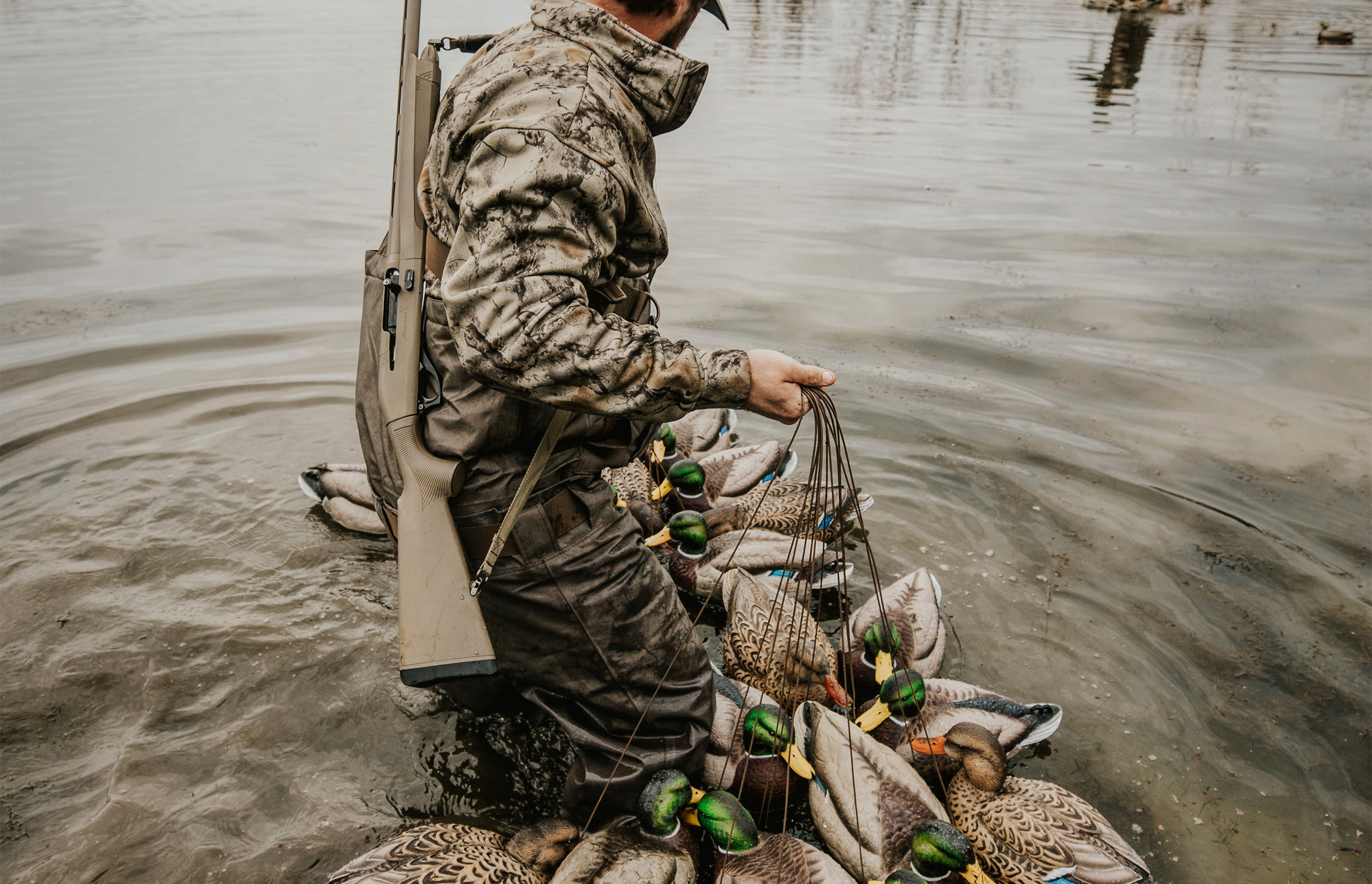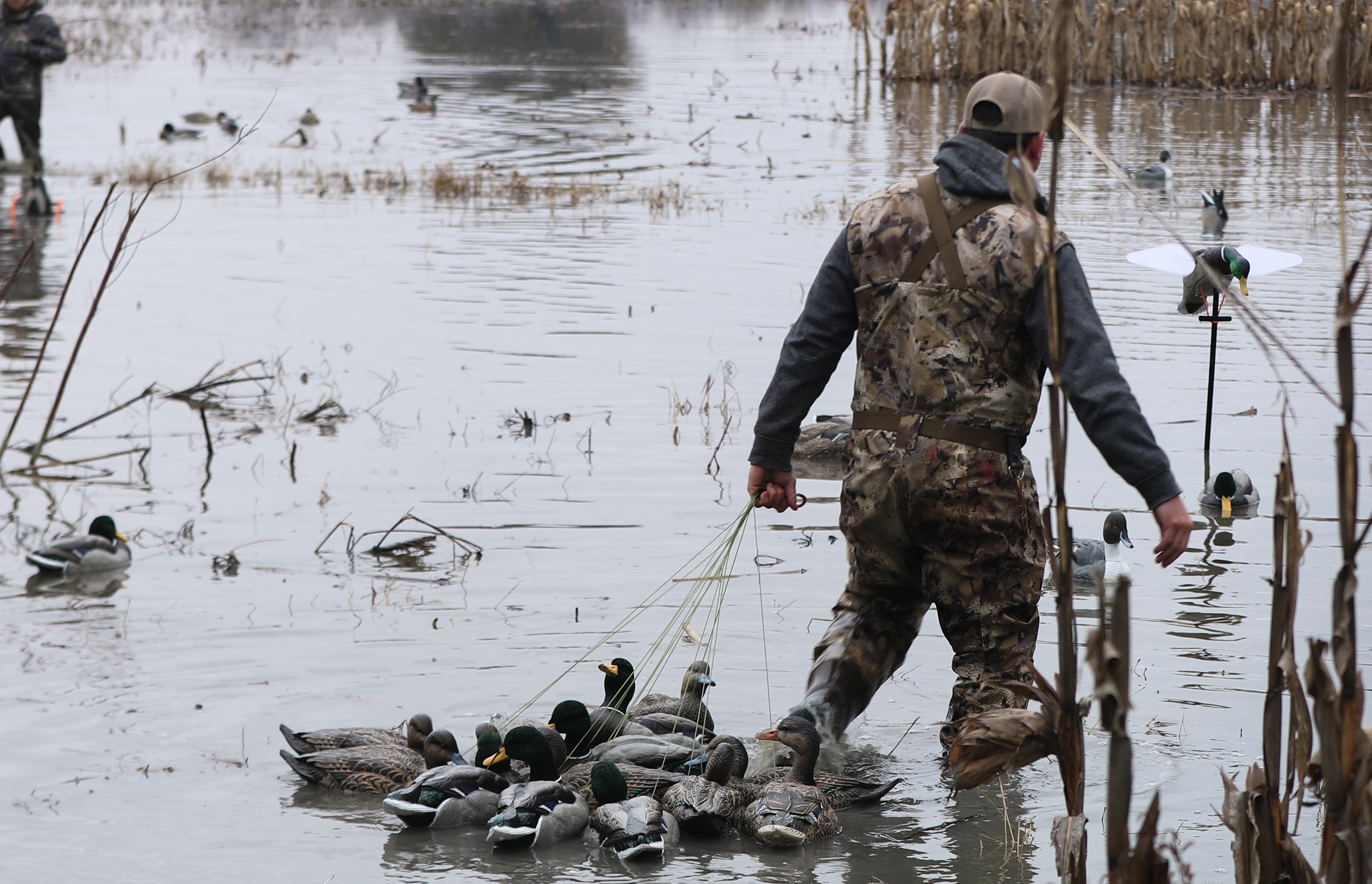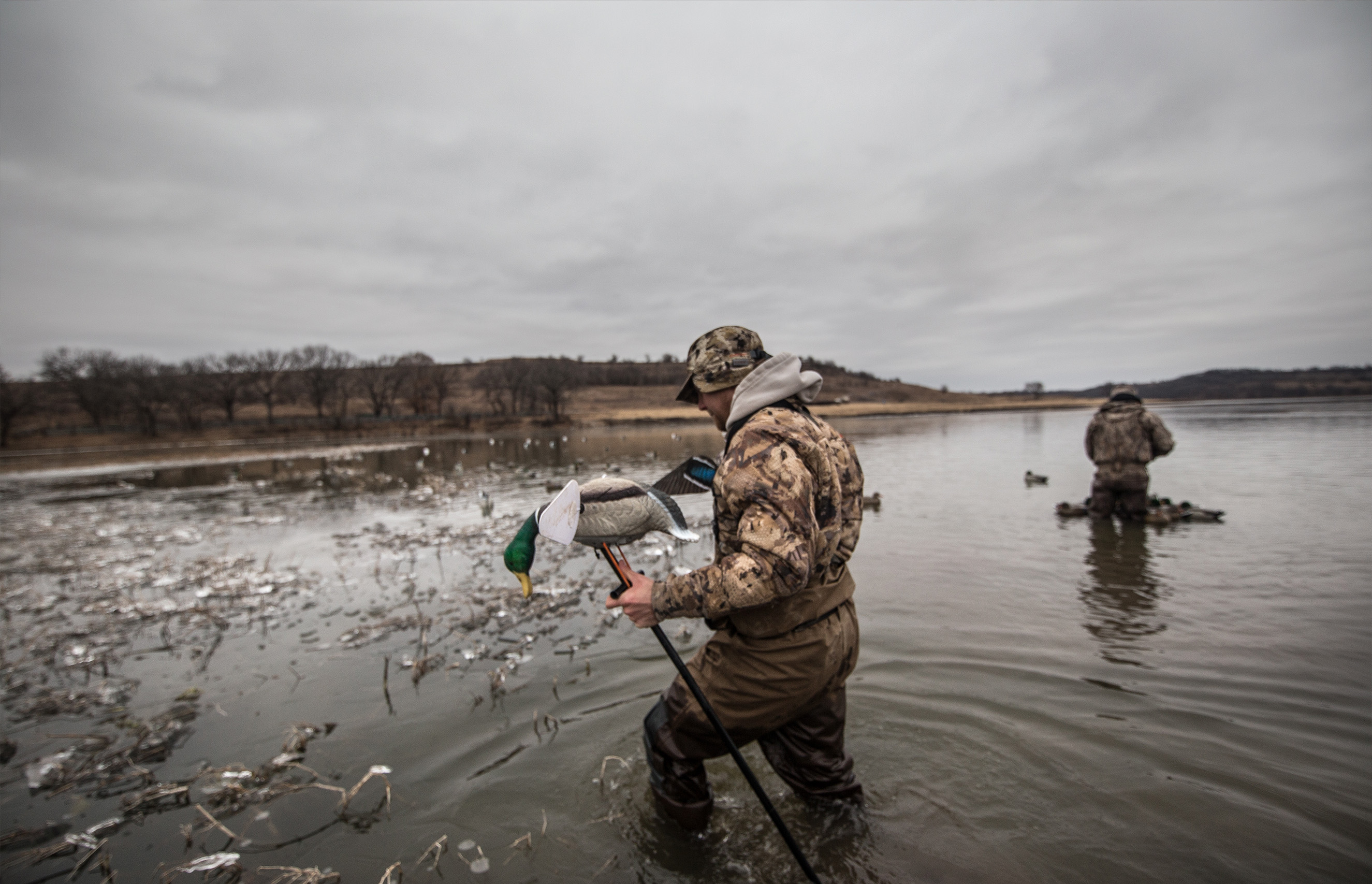The Hunter’s Guide to Selecting the Best Duck Decoys
Posted by Lucky Duck Team on Sep 25th 2024

Understanding Your Hunting Environment
Imagine this: It’s early morning, you’re setting up in a marsh with wisps of mist rising from the water, and the sounds of waking wildlife surrounding you. The excitement builds as you prepare for the first light when ducks start to move. But here’s the catch—your success heavily depends on your decoys.
Hunting in open water is a whole different game compared to a small pond or flooded timber. If you’re hunting on a big lake, visibility is your friend. Ducks can spot your decoys from a distance, so more decoys can be a good strategy there. On the other hand, in a small, quiet pond, you don’t have as much room to spread out your decoys and ducks won’t see them from as far away anyway. Here, smaller, more natural-looking decoys can do the trick.
So, before you even think about placing your decoys, take a good look around. What’s the water depth like? What species of ducks are common here? Is there heavy vegetation or open water? Answering these questions will guide your decoy choices and support your hunt.
Material Matters
Let’s talk about the decoys themselves. What should your decoys be made out of?
- Plastic Decoys: These are your all-around workhorses. They’re durable enough to handle rough conditions and light enough to carry into the field. Plus, they offer great realism at a lower cost than you would be able to get otherwise. If you’re looking for premium decoys, ours are made with durable EVA plastic that resists cracking.
- Foam-Filled Decoys: Foam-filled decoys are filled internally with (you guessed it) foam and therefore can’t fully sink when you’ve accidentally hit them with a pellet, though they may never ride the same height in the water again. If you shoot close enough to your decoys to turn them into collateral damage, it will probably be simpler to dry and patch a plastic decoy rather than a foam-filled decoy.
- Wooden Decoys: While not usually as lifelike or as common these days, wooden decoys offer a classic look and excellent durability. They’re much heavier and less practical but sometimes it’s good to add a touch of tradition to your hunting, especially if they’re your grandad’s old decoys.
When choosing decoys, think about how far you’ll be carrying them, how rough the conditions will be, and what kind of realism you need. Whether you prioritize durability or portability, selecting the right material ensures your decoys perform well throughout the hunting season.
Size and Quantity: Tailoring Your Spread

Imagine you’re setting up for a morning hunt. The fog is lifting, and you’re laying out your decoys. But how many should you use? What size is best? The size and quantity of your decoys can make a significant difference in how effective your spread is.
- Marshes and Small Ponds: If you’re hunting in a confined area, like a small pond or marsh, a dozen decoys might be plenty. In these situations, go for a mix of standard-sized decoys that look natural in the smaller space.
- Open Water: On the flip side, if you’re on a large lake or open water, a bigger spread with more motion is helpful. And you’ll want ducks to see your decoys from as far away a distance as possible, so consider using more decoys to increase visibility.
- How many should you get? As far as the ducks are concerned, you can’t have too many decoys. It’s pretty safe to say that ducks were never scared away by having more decoys, though we have heard that some hunters’ spouses made some remarks after large purchases.
Motion Decoys

You’re out in the field, the decoys are set, and you’re waiting when you notice that something’s missing—there’s no movement. Ducks are incredibly perceptive, and static decoys can sometimes fail to attract their attention. That’s where motion decoys come in.
- When to Use Motion Decoys: Motion decoys are most effective on calm days when there’s little natural movement in your spread. If the water is still, a few well-placed motion decoys can simulate the natural behavior of ducks feeding or landing, which can be the difference between a successful hunt and just watching the weather.
- How to Use Them: Place motion decoys strategically. For example, position a spinning-wing decoy at the edge of your spread to mimic a duck landing. A decoy that creates ripples can make your spread come alive, attracting ducks from a distance.
- Types of Motion Decoys: There are various types of motion decoys, from spinning-wing and quiver models to swimmers and agitators. Spinning-wing decoys are great to attract ducks, but if the ducks are not committing with the spinner, then quiver ducks, swimmers and agitators are a good next step since they create realistic ripples that go a long way toward convincing ducks that your decoys are real ducks having a grand old time swimming and feeding. But whichever you go with, incorporating motion into your spread is a good idea.
Budget-Friendly vs. Premium Decoys: Finding the Right Balance
Decoys come in all shapes, sizes, and prices. But how do you know whether to go for the budget option or invest in premium decoys?
- Budget-Friendly Decoys: If you’re just starting out or need to cover a large area on a budget, budget decoys can be a good choice. They allow you to build a sizable spread without breaking the bank, but these often wear out or break faster, and basic options most likely will not add motion to your spread.
- Premium Decoys: We certainly believe that purchasing high-quality decoys pays off, which is why we make them here at Lucky Duck. They are especially helpful in areas where ducks are more cautious. Our premium decoys come with more realistic paint jobs, durable construction, and often include features like realistic motion that make your spread more effective.
Getting Ready for Your Next Hunt
Selecting the right type of decoy depends on the specific conditions you expect to encounter during your hunt. For those serious about enhancing their hunting setup, consider investing in Lucky Duck's premium decoys. With realistic designs, durable construction, and effective features tailored to various hunting environments, Lucky Duck offers a range of decoys that can elevate your hunting experience. Make your next hunt your best one yet—check out Lucky Duck's premium decoys today!
